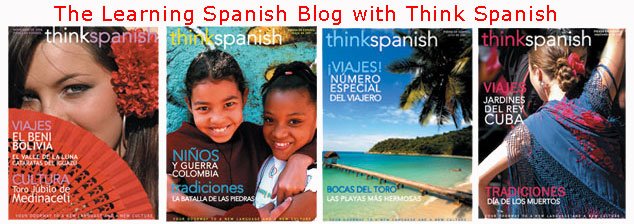Wednesday, July 30, 2008
Welcome to the Think Spanish Blog!
Spanish Idioms and Sayings
- A diario una manzana es cosa sana. An apple a day keeps the doctor away.
- A donde el corazon se inclina, el pie camina. Home is where the heart is.
- A todos les llega su momento de gloria. Every dog has its day.
- A beber y a tragar, que el mundo se va a acabar. Eat, drink and be merry.
- Mejor solo que mal acompañado. Better alone than poorly accompanied.
Do you know any funny or unusual Spanish sayings? Please post a comment and share them with us!
Saturday, July 19, 2008
¿Dónde está el acento?
For example, gato, hablan, perros, verduras, acento
When a word ends in a consonant other than “n” or “s,” the inflection is usually on the last syllable, such as the word, pared. We don’t need to write the accent mark on such words. But in cases where these rules do not hold, an accent mark is in fact necessary.
For example, música, ratón, dólares, inglés, café
These words require accent marks because they do not follow the usual inflections of the language. A common mistake occurs with the words: examen, which does not require an accent and exámenes, which does require one since the inflection is no longer on the second last syllable.
There are also certain homonyms that are accented to distinguish one meaning from another. Here are a couple of examples of the distinctions:
Esta refers to the feminine “that,” while está means “is.”
De means “of” or “from,” while Dé is an imperative form of third personal singular of the verb "dar."
Se is used with reflexive verbs, while sé means “I know.”
Also, question words that come at the beginning of sentences (¿Dónde?, ¿Cómo?, ¿Cuándo?, ¿Qué?, and ¿Quién? ) require accent marks, whereas the same words with different meanings or uses do not have accent marks (donde, como, cuando, que, and quien).
If you learn these rules, you’ll never make mistakes writing accent marks, and you’ll have better Spanish pronunciation! ¡Qué bien!
Sunday, July 13, 2008
Learning Spanish Embarrassing Blunders
I was studying abroad in
Sometimes you learn Spanish the hard way! Please share your embarrassing Spanish learning blunders with us! Add a comment below.
